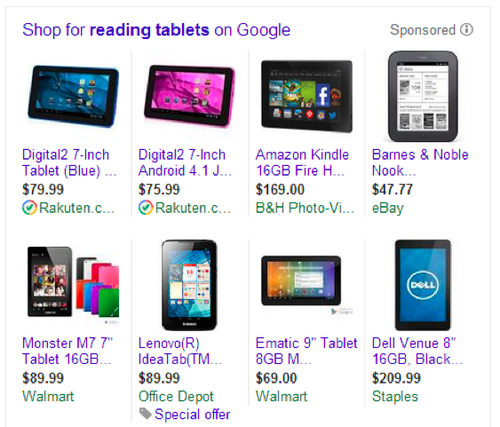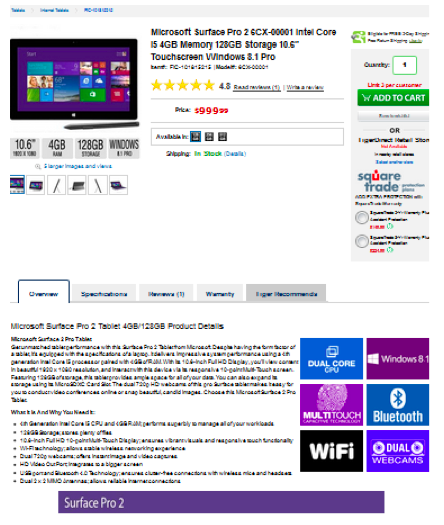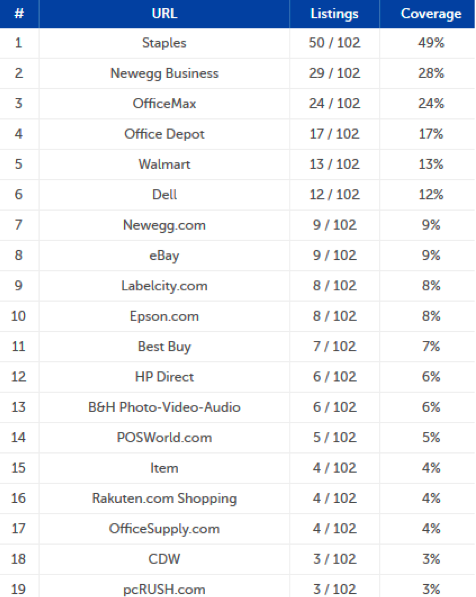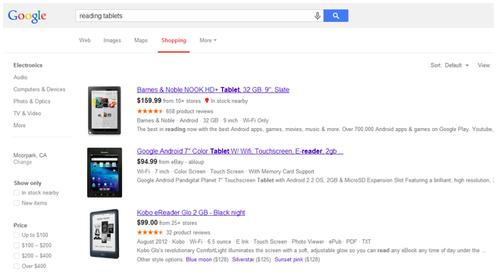By Chris Darabi, Senior SEM & Channel Sales Consultant, InternetMarketing.net

Google Shopping, otherwise known as Product Listing Ads (PLAs) are a rapidly growing channel and a no-brainer for e-Commerce merchants looking to increase sales, as they are a very profitable medium. Over the last year, InternetMarketing.net and other agencies have noticed amazing things about Google Shopping like:
- 13% of traffic: Google Shopping was 13% of traffic and 12% of sales for 2013.
- 84% year-over-year (YoY) increase: Q4 2013 showed a 65% YoY increase in traffic, and an 84% increase in revenue.
- Mobile PLAs are on the rise: Google introduced Mobile PLAs in 2013, and by Q4 they were 24% of overall PLA traffic. That number is sure to rise.
Now that we‘ve gotten the unavoidable growth stats out of the way, let’s go over why Google Shopping works so well and what factors have contributed to the consistent surges in PLA traffic.
Google Shopping Ads Are Better Than Regular Text Ads
When comparing Shopping Ads to the standard text ads, there are three major differences that set itself apart from a user’s experience when they chose to click on a product listing ad.

- Product Image: The most obvious is the fact that users can see a product image, which is being pulled from your feed and displayed directly on the search engine results page.
- Price: The second major difference is that these ads are also listing the price of each product right below the image. These two factors alone have already done a great job of qualifying your traffic since anyone who decides to click has liked what they’ve seen so far visually in terms of how the product looks. Additionally, the price is not an issue for them so you have set the right expectation, which won’t cause any surprises once they go to your site and reduces your bounce rate.
- More Relevant Content: Now that your traffic has been properly qualified, the third crucial factor is that they are being sent directly to a product page. This naturally increases the likelihood of them converting. Why risk them digging through your home or category pages in hopes that they don’t lose patience in the process when they aren’t able to find what they were looking for, when you can instantly send them to a product page they already showed interest in?
They are very similar to other shopping engines like Pricegrabber, Nextag, Shopzilla, Amazon Product Ads, Bing Shopping and more. However, unlike the other shopping engines Google Shopping can drive so much volume since the ads are being placed right on Google’s search results page.

Many Merchants Don’t Even Do Google Shopping!
Google Shopping is still a relatively new channel. What’s amazing is that so many merchants who spend money with Google on their text ads don’t advertise with Google Shopping. Some do it out of righteous indignation that it used to be free, others out of pure ignorance. Either way, it’s great for early adopters, as Google Shopping clicks can often be cheaper than text ads.
Of Merchants That Are On Google Shopping, Most Of Them Have Exposure Less Than 10% Of The Time!

In a random sampling of Google Shopping Keywords done with IMPACT — InternetMarketing.net’s Google Shopping tool — we found that only the first six merchants had over 10% marketshare on Google Shopping. The rest, including many Fortune 500 companies, have a very low percentage of the relevant market.
Google AdWords Doesn’t Give You The Tools To Succeed!
This isn’t because those companies are dumb. To the contrary, many of these companies have been early adopters in Google Shopping. However, there is a serious lack of transparency in the AdWords interface in terms of reporting and optimizing your PLA campaigns.
Where Am I? Google Shopping Never Tells You Your Average Position
Why are we not able to see what our Average Position is for each product being listed?
This might seem like a petty metric to harp on but it would play a very important role in telling merchants how much they should be bidding for each product. It could be the difference between overbidding and paying too much per click or not knowing when you need to increase your bids and get more visibility. By not providing data on average position, this leaves some merchants blindly raising their bids to make sure they are maximizing their click volume, while other merchants just under-bid, are happy with their return and never realize there’s opportunities for lots more sales.
Where Am I Not? Google Shopping Never Tells You Which Keywords You Don’t Show Up For
The second challenge is that we have little insight into what factors will give your product feed a higher rank than your competitors. In our testing, we have that Google favors those with a “higher quality” feed by giving them broader exposure. The question becomes what type of product information in your feed will influence how you rank on specific keywords? Is it your product title that plays the most important role or product description? Does including color, size or other fields within your titles rank you higher? (Custom and complete fields used to help influence rankings when Google Shopping was free.)

These are the questions we have been working to answer, which is why our team at InternetMarketing.net has created a new tool called IM-PACT to give merchants average position for Google Shopping/ Product Listing Ads in addition to providing insight into the data quality factors that get you ranking above your competitors.
This tool will instantly generate powerful reports showing what keywords you are not showing up for in Google Shopping, which competitors are ranking above you and whether their product information is of a higher quality than yours. It also reports on how price competitive you are compared to other merchants and which products in your feed need optimization to start showing up more prominently.
IM-PACT is extremely easy to use as all you need to do is simply enter your web site URL. It will then instantly email you a free report which provides a tremendous amount of insight that is currently unavailable anywhere else. We are in the early days in analysis, but this tool has already helped one of our clients double their Google Shopping Sales almost overnight.

We are very excited for the future of Google Shopping as it continues to show incredible growth and eager to share our new tool with ecommerce merchants of all sizes. If you are looking to leverage this data to improve your PLA campaign performance, use IM-PACT to generate a free report of your product listings ads and feel free to let us know what you think in the comments below!
Chris Darabi is a Senior SEM & Channel Sales Consultant at InternetMarketing.net; A certified Google Partners Consulting Agency based in Los Angeles, Calif. They manage $25 million dollars in advertising for their clients, and provide strategic direction, services and tools which help their clients increase revenue online. Chris specializes in PPC advertising, Web Analytics, Shopping Engines and Remarketing.






